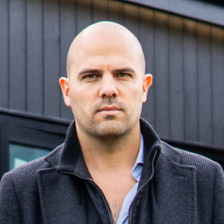Why Green Certifications Matter More Than Ever
Bay Area businesses are under growing pressure to reduce carbon footprints, attract eco-conscious talent, and meet stricter building codes.
Two key certifications dominate the sustainability landscape: LEED (Leadership in Energy and Environmental Design) and CALGreen (California Green Building Standards Code).
For companies remodeling or building offices in 2025, these certifications aren’t just nice-to-have — they’re often essential for compliance, incentives, and long-term cost savings.
Understanding LEED vs. CALGreen
What is LEED?
- A voluntary, internationally recognized green building certification managed by the U.S. Green Building Council (USGBC).
- Awards points across categories like energy, water, materials, indoor quality, and innovation.
- Certification levels: Certified, Silver, Gold, Platinum.
What is CALGreen?
- California’s mandatory green building code for new construction and major remodels.
- Sets minimum requirements for water efficiency, waste reduction, indoor air quality, and energy performance.
- Compliance is required for permits — but exceeding CALGreen can support LEED goals.
Key Benefits of Green Certification
- Lower Operating Costs: Reduced energy and water bills through efficient systems.
- Incentives and Rebates: Access to state/federal tax credits and utility rebates.
- Talent Attraction: Eco-conscious employees prefer sustainable workplaces.
- Brand Reputation: Demonstrates corporate responsibility to clients and investors.
- Future-Proof Compliance: Prepares for evolving regulations in California.
Steps to Achieve LEED Certification
Step 1: Define Certification Goals
Choose target level (Certified, Silver, Gold, Platinum) based on budget and sustainability objectives.
Step 2: Hire LEED-Accredited Professionals
Work with architects and contractors experienced in Bay Area LEED projects to streamline documentation and point strategies.
Step 3: Conduct Sustainability Assessment
Audit building systems (HVAC, lighting, water, materials) to identify improvement opportunities.
Step 4: Integrate Green Strategies
Examples:
- Install high-efficiency HVAC and LED lighting
- Use low-VOC paints and recycled materials
- Add water-saving fixtures and drought-tolerant landscaping
Step 5: Document and Submit
Compile required documentation for USGBC review, including performance data and construction practices.
Step 6: Certification Review
USGBC reviews the project, awards points, and grants certification based on achieved criteria.
Steps to Meet CALGreen Standards
Mandatory Requirements
- 20% reduction in indoor water use
- Construction waste diversion (≥65%)
- Low-emission materials and finishes
- Building commissioning for energy systems
Optional Tiers (Tier 1 & Tier 2)
Cities like San Francisco and Palo Alto often adopt Tier 1 or Tier 2, requiring higher efficiency than state minimums.
Permitting Process
- Submit CALGreen checklist with building permit application
- Provide verification from a Certified Green Building Professional during inspections
Cost Considerations
- LEED Costs: Registration ($1,200+), certification fees (based on sq ft), and consultant fees.
- CALGreen Costs: Compliance is mandatory but costs vary by scope; Tier 2 compliance may add 1-3% to construction budget.
- Savings: Energy rebates, lower utility bills, and potential rental premium for certified spaces.
Common Challenges and How to Overcome Them
- Documentation Complexity: Engage LEED consultants early to avoid rework.
- Higher Upfront Costs: Balance with long-term ROI from energy savings and incentives.
- Alignment with Tenant Needs: Ensure sustainability features align with operational goals (e.g., hybrid work, flexible layouts).
Case Study: Palo Alto Office Remodel
A 30,000 sq ft tech HQ renovation in Palo Alto pursued LEED Gold and CALGreen Tier 1 compliance:
- Added solar panels and high-efficiency HVAC
- Used recycled wood and low-VOC finishes
- Achieved 40% water use reduction
Result: Certified LEED Gold in 2024, cutting operational costs by 25% annually and boosting employee satisfaction scores.
Final Thoughts
Green building certifications are no longer optional in the Bay Area — they’re a competitive necessity.
By aligning LEED and CALGreen strategies, companies can reduce costs, attract talent, and future-proof their offices against evolving regulations.
GC44 specializes in guiding businesses through certification, from design to documentation, ensuring a seamless path to sustainable success.





